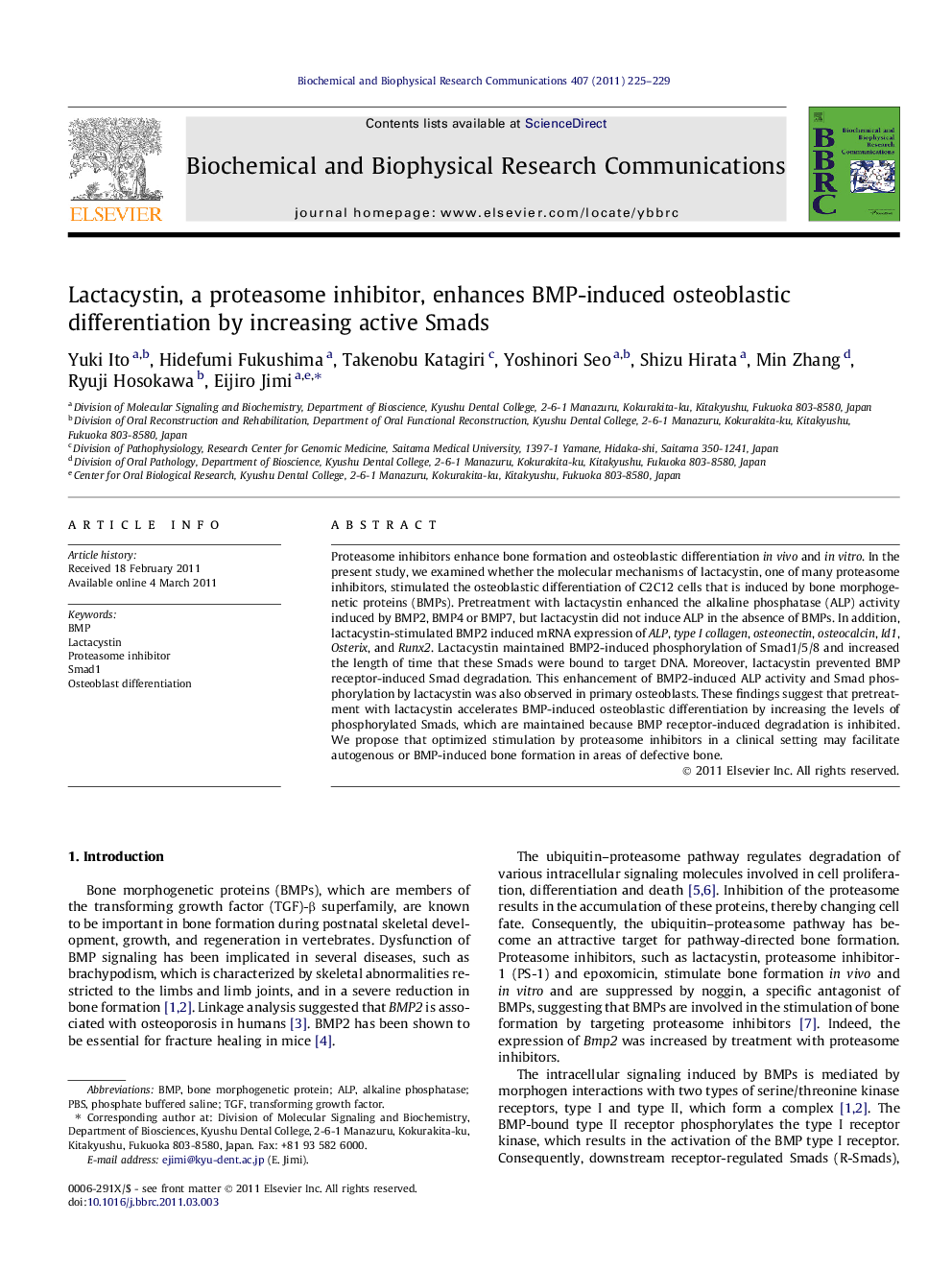| Article ID | Journal | Published Year | Pages | File Type |
|---|---|---|---|---|
| 1930882 | Biochemical and Biophysical Research Communications | 2011 | 5 Pages |
Proteasome inhibitors enhance bone formation and osteoblastic differentiation in vivo and in vitro. In the present study, we examined whether the molecular mechanisms of lactacystin, one of many proteasome inhibitors, stimulated the osteoblastic differentiation of C2C12 cells that is induced by bone morphogenetic proteins (BMPs). Pretreatment with lactacystin enhanced the alkaline phosphatase (ALP) activity induced by BMP2, BMP4 or BMP7, but lactacystin did not induce ALP in the absence of BMPs. In addition, lactacystin-stimulated BMP2 induced mRNA expression of ALP, type I collagen, osteonectin, osteocalcin, Id1, Osterix, and Runx2. Lactacystin maintained BMP2-induced phosphorylation of Smad1/5/8 and increased the length of time that these Smads were bound to target DNA. Moreover, lactacystin prevented BMP receptor-induced Smad degradation. This enhancement of BMP2-induced ALP activity and Smad phosphorylation by lactacystin was also observed in primary osteoblasts. These findings suggest that pretreatment with lactacystin accelerates BMP-induced osteoblastic differentiation by increasing the levels of phosphorylated Smads, which are maintained because BMP receptor-induced degradation is inhibited. We propose that optimized stimulation by proteasome inhibitors in a clinical setting may facilitate autogenous or BMP-induced bone formation in areas of defective bone.
► Lactacystin, a proteasome inhibitor, enhances BMP-induced osteoblast differentiation in C2C12 cells. ► Lactacystin maintains BMP2-induced phosphorylation and DNA binding activity of Smad1/5/8 by preventing ligand-induced Smad1 degradation. ► Optimized lactacystin treatment in a clinical setting may facilitate autogenous or BMP-induced bone formation in areas of defective bone.
